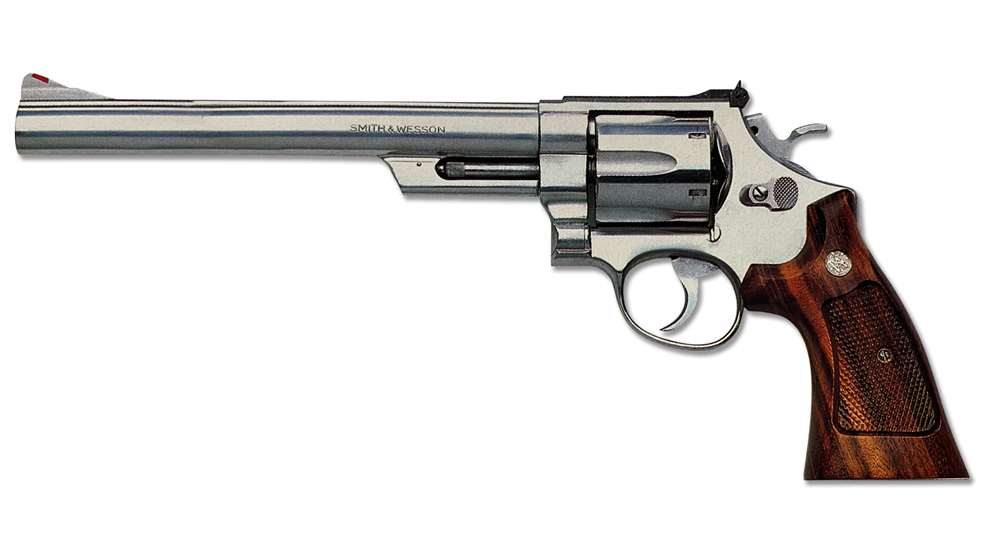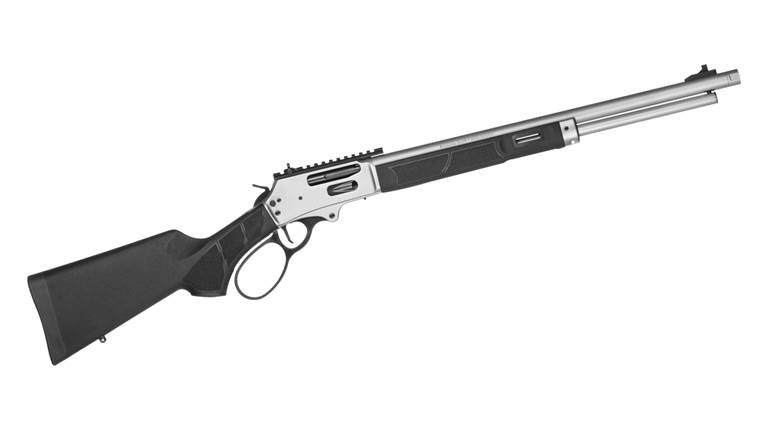
Q. I recently acquired a Model 629 Smith & Wesson revolver. It has the 83⁄8" barrel and S&W wood stocks. The yoke has “G23” over “42995,” and on the right side, it is marked with “AYF3198” over “M-629-1.” If I didn’t know it to be a 629, I would swear it was nickel; this is, by far, the brightest stainless gun I have seen.
A. The S&W Model 629 was introduced in 1979 as a stainless-steel version of the popular Model 29. Numerous engineering changes have occurred over the course of its production. The first, designated as the M629-1, occurred in 1982 and involved the elimination of the pinned barrel and chamber rim counterbores, along with a slight increase in cylinder length. The serial number AYF3198 does not help in determining the gun’s age, as there is no published listing of serial numbers by production date although, through research, I believe your S&W was produced in early 1988. The 629-1 was replaced by the -2 version in 1988.
The twice-occurring G23 and 42995 were likely applied to verify that the yoke and frame were a matched set. Any other markings usually represent inspection and approval at different points of production.
At the time of your revolver’s production, there were no options available for degree of polish. Admittedly, it is possible to find variations in the level of polish due to normal human activity and tolerance of polishing equipment. Unless you are the first owner of the gun and can verify the level of finish, I suspect that the shiny appearance you describe was likely achieved through the efforts of a previous owner.
—John W. Treakle, Contributing Editor





































